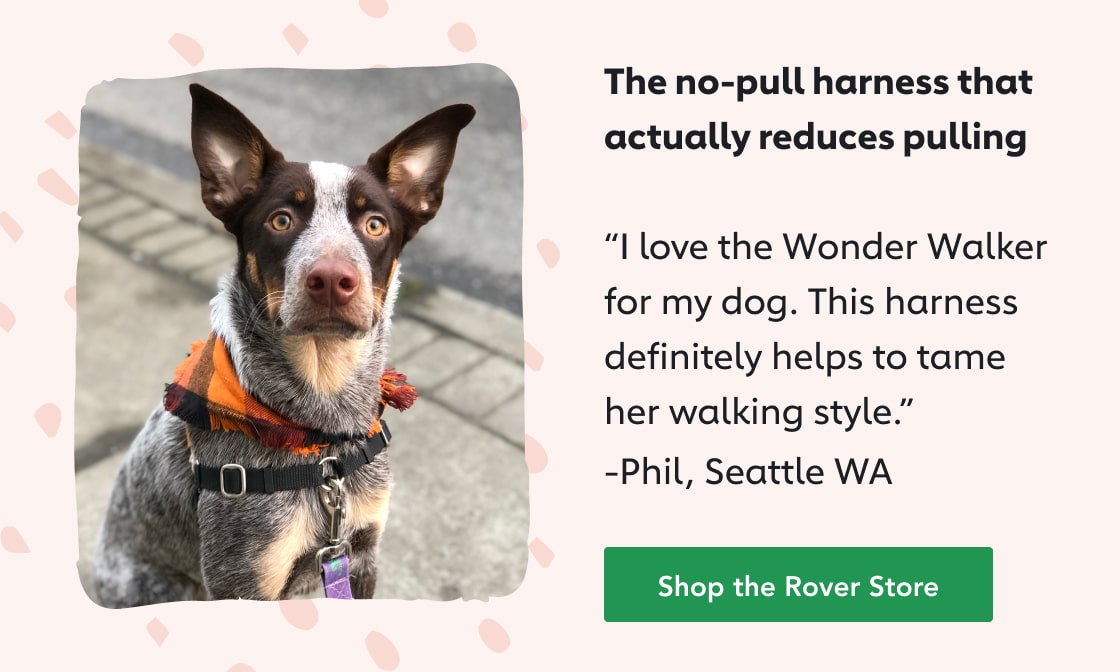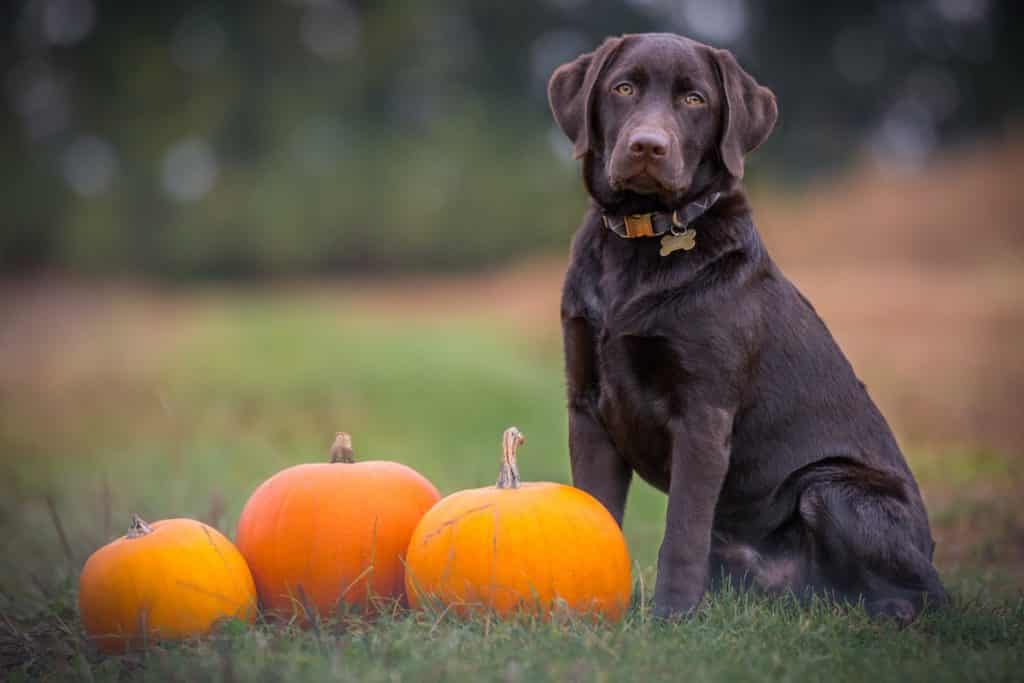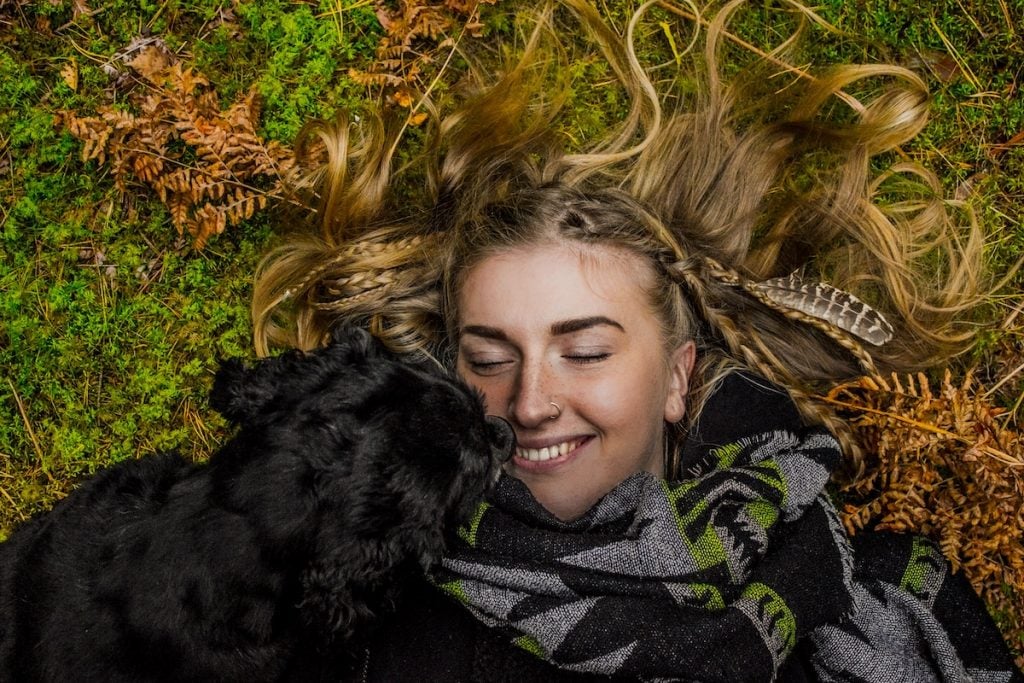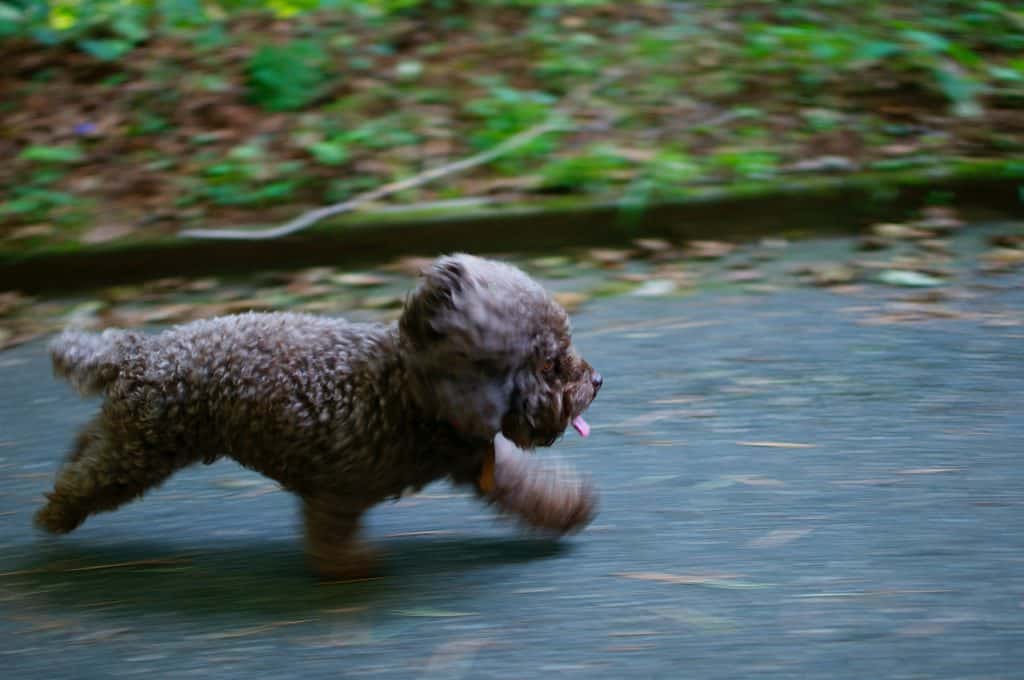- This post contains affiliate links. Read more here.
Creating a dog-friendly garden will take time, but in the end you’ll be able to enjoy your dog and the pleasure of a pet-friendly green space in peace. As with other aspects of gardening, you can expect some trial and error, but we assure you there is a way to keep your love of gardening and dogs in relative harmony.
Dog-Friendly Gardening Tips and Ideas for the Perfect Pet-Friendly Green Space
Read on for our tips and ideas to keep curious paws out of garden beds, what plants are safe for dogs, and other topics of interest.
1. Prepare Your Dog for Success
General obedience basics never hurt. If your dog understands your commands to stop, heel, and sit, they’re less likely to mow down plants or nibble on leaves. This will be especially helpful for dissuading your dog from napping in the dirt of a cool flower bed (though you can’t blame them for trying).
Puppies can start learning basic behavioral guidelines as early as six weeks, and old dogs can learn new tricks. If dog training allows you to communicate that certain aspects of the garden are off-limits, you’re off to a fantastic start.
You can teach your dog that the garden is a quiet place for relaxing. Be consistent: When your dog has energy to burn, teach them the appropriate place for zoomies, play, and exploration is outside on a walk, at the dog park, or on a hike.
2. Know What Plants Are Toxic, and What Plants Are Safe, for Pets
The best dog-friendly garden is free of dangerous, toxic plants, but first, you need to know what they are. To get started, check out the most poisonous plants for dogs and this list of some dog-safe plants for any garden. This is the only step where, if you have a food-motivated dog or a chewer, it’s better to be safe than sorry.
- Inventory your existing garden plants. Don’t overlook the trees.
- Check that your existing plants are non-toxic. For an exhaustive guide, consult our list of the top Poisonous Plants to Cats and Dogs.
- Remove any toxic plants, including the root structures to avoid regrowth. Do not use any chemical plant or weed killers as these can poison your dog if ingested.
- If you must grow your favorite dog-toxic plants (hey, we understand all you tomato lovers out there!), designate a safe-to-grow area of the garden with a fence, barrier, or other dog deterrent.
Once you have a non-toxic area set aside for your pet, you can begin to introduce new plants that you have checked are dog-friendly. If you ever suspect your dog has ingested a toxic plant, contact your vet immediately, or call the Pet Poison Helpline at 855-764-7661.
3. Select Mature Starters
To assure your starter plants survive their canine yard-mate, select larger, more mature plants, particularly with varieties that are slow-growing or difficult to establish. Starting with more established plants helps create a pet-friendly garden in several ways:
- Already-established plants are hardier and can develop strong roots more quickly.
- A larger plant serves as a visual cue to your dog to dodge the plant when chasing a toy or squirrel.
- If your clumsy (but adorable) dog happens to snap off a branch or two, larger, stronger plants have more of a chance to survive any brush-ins with your pup.
Your local nursery should be able to help you identify what plants would be good or even ideal for your individual garden, and type of dog.
4. Select Sturdy Border Plants and Barriers
When designing your dog-friendly garden, protect any delicate plants that might be sensitive to trampling, urination, etc. These plants can be blocked with sturdy, thick border plants such as shrubs and hardy groundcovers that provide a natural barrier, dissuading your dog from barreling over your favorite dainty floral or lace-like fern.
Or you can choose to erect signal barriers that will help establish no-go garden spaces for your dog: decorative fences, rocks, or even pieces of driftwood can work for this.
Depending on temperament and breed, small dogs can be deterred by standard garden edging or lightweight, folding wire fencing; even for larger dogs, it creates a boundary that makes training easier.
Certain plants—particularly vegetables you don’t want the dog to dine upon—may require chicken wire fence or covering to defend against snacking and trampling
5. Use Containers and Raised Beds
Container gardening is a good option for small spaces or for dogs who just can’t resist digging or get a little wild in open spaces. Elevating or otherwise strategically placing your garden bed can restrict your dog’s access to it. Some ideas:
- Plant in sturdy containers such as horse troughs or large pots.
- Hanging baskets or plant shelves help protect your plants from digging paws.
- Raised beds clearly demarcate growing space from play space, especially if you use chicken wire or another barrier to prevent your dog from getting into them.
However, these strategies aren’t recommended for growing dog-toxic plants in otherwise dog-friendly spaces. For instance, if you miss a harvest of your tomato plants, suddenly your dog will have access to overripe and toxic treats that have fallen to the ground.
6. Put Up Sturdy Fences for Unsafe Places
When growing delicate or dearly loved plant varieties and/or dog-toxic plants in your dog-friendly garden, be sure you have a solid barrier to protect your pet as well as your plants.
The extent and type of the fencing required will again depend on your dog’s temperament, size, and breed. Some dogs are escape artists (here’s looking at you, huskies). This is another area where cost may be a factor in how dog-friendly you can make your garden, as sturdy fencing can run at a hefty cost.
7. Give Your Garden a Perimeter and Dog Paths
Simply creating a clear, dog-friendly perimeter path can help your dog feel they have a job to do in the garden as much as you do. With dog-designated paths and a well-defined border, your dog may very well feel it’s their duty to patrol the border. In fact, they may be very useful in warding off squirrels, rabbits, or other vegetable raiders.
Make sure it’s a pathway with a paw-friendly surface for your dog, such as small cedar chips or pea gravel.
The perimeter might also be enhanced with driftwood or other forms of edging that communicate the boundary clearly. This same material can cut through the garden in various sections so your dogs are more likely to stay on the path.
This article in Sunset magazine has more great tips for designing the perfect dog-friendly garden.
8. Use Strong Smells to Deter Digging
As with most of our tips, deterring some of your dog’s natural behaviors will likely be necessary. Here are some scents that may help to curb dogs from digging in the garden:
- Spices can be used to ring particular plants or garden spots where Fido isn’t welcome. Ground mustard or crushed dried pepper can be effective.
- Coffee grounds generally make dogs steer clear. An additional bonus is that coffee grounds make for a great fertilizer in many cases, so you get two benefits in one!
- Some swear by a plant called Coleus Canina to ward off dogs and cats, especially along a border as a deterrent.
- Rosemary, sage, and bitter orange have pungent smells, and dogs are less likely to approach them.
9. Designate a Play Space—Even for Digging
No dog owner wants their outdoor space to be all work and no play, however, so here are some ways to make the place fun for your pup:
- Create paths to patrol around your garden beds.
- Train your dog to play in sturdy areas and/or reserve time outside of the yard for running and playing.
- Use logs, stumps, and rocks for visual interest as well as fun obstacles for a running pup.
- Create a dig spot, a loose area of otherwise unused dirt where their dog can exercise that digging instinct.
- Allow for relaxing in the shade and keep out fresh water.
Further Reading
For more about dog-friendly gardening and dog-safe gardening tips, check out one of the articles below.




